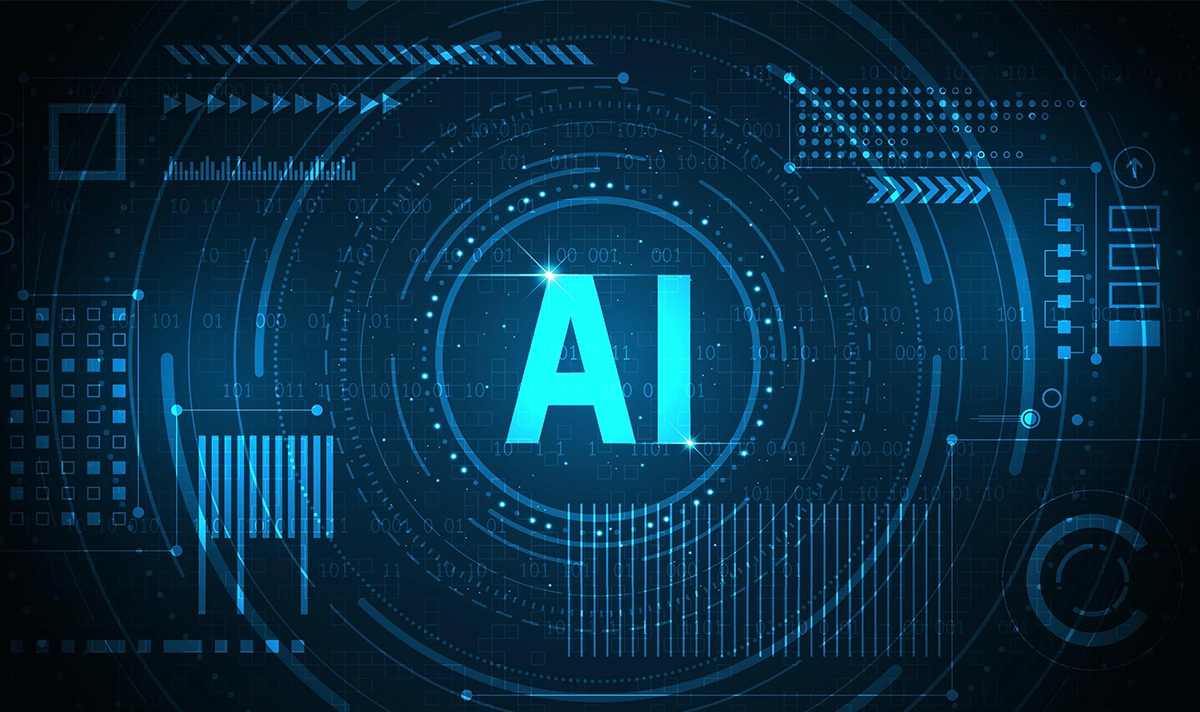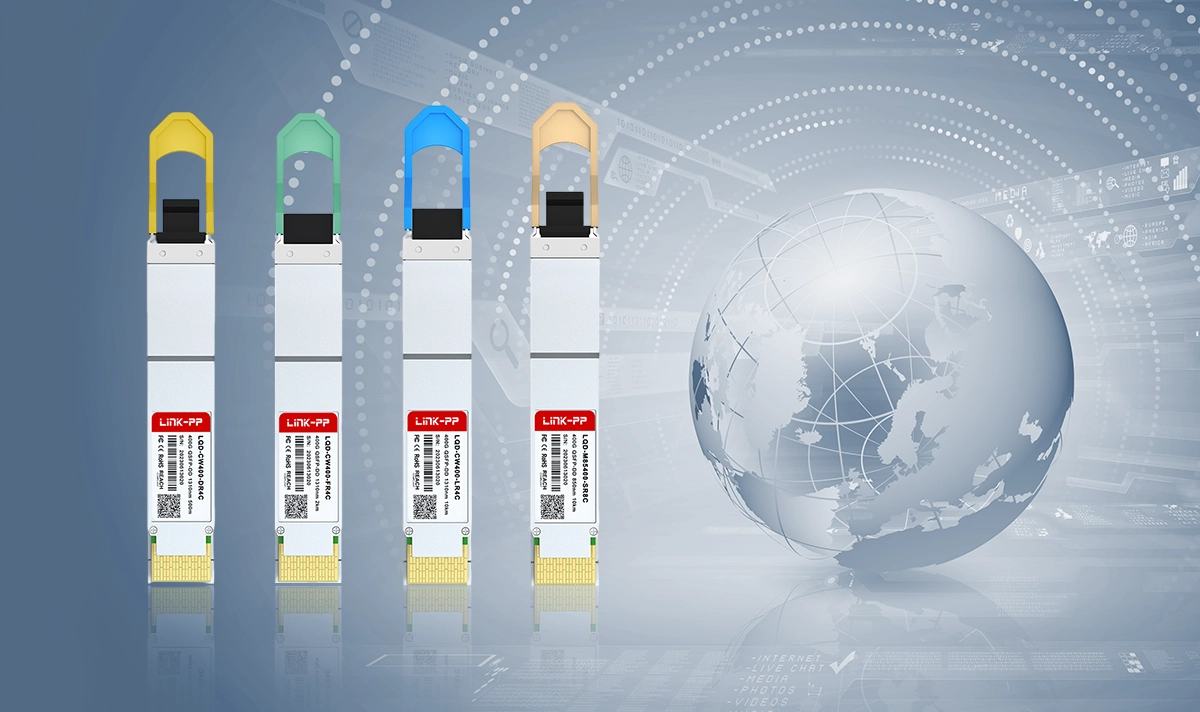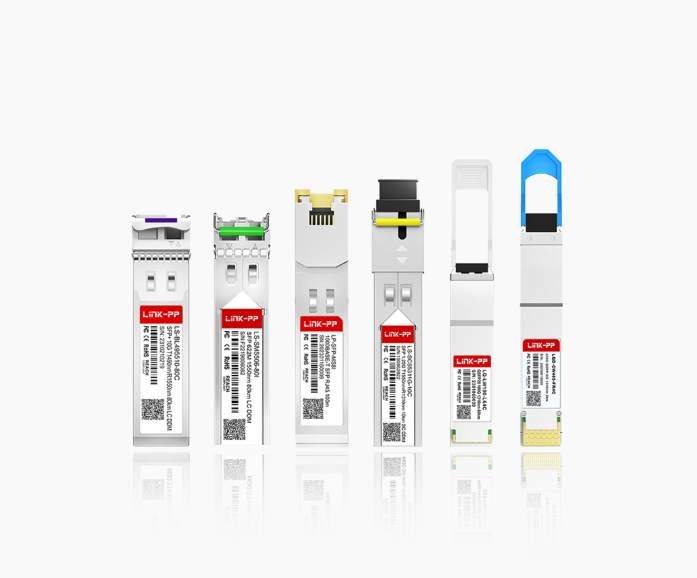
As artificial intelligence (AI) workloads surge, data centers face unprecedented demands for speed, bandwidth, and efficiency. In this article, we explore how connectivity solutions—including specialized high-bandwidth connectors and advanced optical modules—are evolving to support AI infrastructure. Discover key technologies like LINK-PP’s innovative products, and learn why optimizing data center connectivity is critical for handling AI-driven tasks. From fiber optics to next-generation transceivers, we break down the essentials for IT professionals and decision-makers.
📝 Introduction
The exponential growth of AI and machine learning (ML) applications is reshaping data center requirements. AI workloads, such as deep learning training and real-time inference, demand massive data transfers, ultra-low latency, and high throughput. Traditional connectivity solutions often fall short, leading to bottlenecks that hinder performance. To address this, the industry is pivoting toward specialized high-bandwidth connectors and optical modules that enable seamless data flow. This evolution isn’t just an upgrade—it’s a transformation essential for powering the AI era.
📝 The Rise of AI Workloads and Their Demands
AI workloads are characterized by their intensive computational needs. For instance, training large language models (LLMs) like GPT-4 requires processing petabytes of data across distributed systems. Key requirements include:
High Bandwidth: AI models rely on rapid data exchange between servers, storage, and GPUs.
Low Latency: Real-time applications, such as autonomous vehicles or fraud detection, need near-instantaneous responses.
Scalability: As models grow, infrastructure must support expanding data volumes without compromising speed.
According to industry reports, AI-driven data traffic in data centers is projected to grow by over 30% annually, underscoring the urgency for robust connectivity solutions. Integrating high-speed data center connectivity and AI infrastructure optimization has become a top priority for organizations aiming to stay competitive.
📝 Evolution of Data Center Connectivity Solutions
Data center connectivity has evolved from copper-based Ethernet to fiber-optic dominance, driven by the need for higher bandwidth and energy efficiency. Key milestones include:
From 10G to 400G/800G: Network speeds have skyrocketed, with 400G becoming the new standard for AI clusters.
Advanced Connectors: Innovations like QSFP-DD (Quad Small Form-Factor Pluggable Double Density) and OSFP (Octal Small Form-Factor Pluggable) offer higher port density and compatibility with optical modules.
Fiber Optics Dominance: Single-mode and multimode fibers now form the backbone, reducing signal loss over long distances.
📝 The Role of High-Bandwidth Connectors
Specialized high-bandwidth connectors are the unsung heroes in AI-ready data centers. They facilitate the physical layer connectivity between servers, switches, and storage systems. Key features include:
Enhanced Data Rates: Connectors like QSFP-DD support up to 400G per port, ideal for GPU-to-GPU communication in AI training.
Thermal Management: AI workloads generate heat; advanced connectors incorporate cooling mechanisms to maintain performance.
Compatibility: They seamlessly integrate with optical modules, enabling flexible and scalable deployments.
For example, using high-bandwidth fiber optic transceivers ensures that data-intensive AI tasks, such as image recognition or natural language processing, run without interruptions. This is where solutions like LINK-PP’s connector series excel, offering reliability tailored for AI environments.

📝 Optical Modules: The Backbone of Modern Connectivity
Optical modules, or transceivers, are critical components that convert electrical signals to optical ones for transmission over fiber cables. In AI-driven data centers, they enable high-speed, long-distance data transfers with minimal latency.
Why Optical Modules Matter for AI
Bandwidth Efficiency: Modules like 400G QSFP-DD allow dense packing of data streams, crucial for distributed AI training.
Low Power Consumption: Energy-efficient designs reduce operational costs, a key consideration for large-scale AI deployments.
Future-Proofing: As AI evolves toward 800G and beyond, optical modules provide a scalable path.
Introducing LINK-PP Optical Modules
LINK-PP is at the forefront of optical innovation, offering modules designed specifically for AI workloads. Their products emphasize durability, high performance, and seamless integration. A standout model is the LINK-PP 400G QSFP-DD DR4, which supports up to 400G speeds over single-mode fiber and is optimized for leaf-spine architectures in AI data centers. This model exemplifies how LINK-PP optical transceivers for AI applications deliver consistent results under heavy loads, making them a go-to choice for enterprises.
📝 Comparative Analysis of Connectivity Solutions
To illustrate the evolution, here’s a table comparing common connectivity options used in AI data centers:
Solution Type | Max Bandwidth | Latency | Ideal for AI Workloads | Key Features |
|---|---|---|---|---|
Copper Ethernet (10G) | 10Gbps | Moderate | Limited | Cost-effective, short-distance |
QSFP28 (100G) | 100Gbps | Low | Moderate | Common in legacy systems |
LINK-PP 400G QSFP-DD | 400Gbps | Ultra-Low | Excellent | Optimized for AI, low power consumption |
OSFP (800G) | 800Gbps | Ultra-Low | Cutting-edge | Future-ready, supports advanced optics |
This table shows why upgrading to solutions like LINK-PP’s offerings can significantly boost AI performance
📝 Future Trends in Data Center Connectivity
The future holds even more promise, with trends like:
Co-Packaged Optics (CPO): Integrating optics directly into switches to reduce power and latency.
AI-Optimized ASICs: Custom chips that work in tandem with high-bandwidth connectors for faster processing.
Sustainability Focus: Energy-efficient designs will dominate, driven by environmental concerns and cost savings.
By adopting LINK-PP optical modules for scalable data centers, businesses can stay ahead of these trends, ensuring their infrastructure supports emerging AI technologies like generative AI and edge computing.
📝 Conclusion
The evolution of data center connectivity is pivotal for harnessing AI’s full potential. From high-bandwidth connectors to advanced optical modules, these solutions address the core demands of AI workloads—speed, scalability, and reliability. Brands like LINK-PP are leading the charge with products that blend innovation and practicality, such as the LINK-PP 400G QSFP-DD DR4.
🚀 Ready to Future-Proof Your Data Center?
Don’t let connectivity bottlenecks slow down your AI initiatives. Explore LINK-PP’s range of optical modules and high-bandwidth solutions tailored for AI workloads. [Contact us today] for a consultation!
📝 FAQ
Why do you need high-bandwidth connectors in AI data centers?
AI moves a lot of data every second. High-bandwidth connectors help your systems go faster. They stop your network from slowing down. These connectors also help you get ready for more growth in the future.
Why does optical connectivity matter for AI workloads?
Optical connectivity lets data move fast with less waiting. You need this speed for AI to work well. Fiber and optical modules help AI learn and decide things quickly.
Why should you upgrade from copper to fiber networks?
Fiber networks use less power and move data faster than copper. Fiber helps your systems stay cool. This makes your data center work better and last longer.
Why is scalability important in modern data centers?
Scalability means you can add more servers and GPUs when needed. You do not have to rebuild your data center. This saves time and money and keeps your network strong.
Why do companies invest in co-packaged optics?
Co-packaged optics lower delays and make things work better. You get faster data movement and better support for AI. This helps your data center keep up with new technology.




